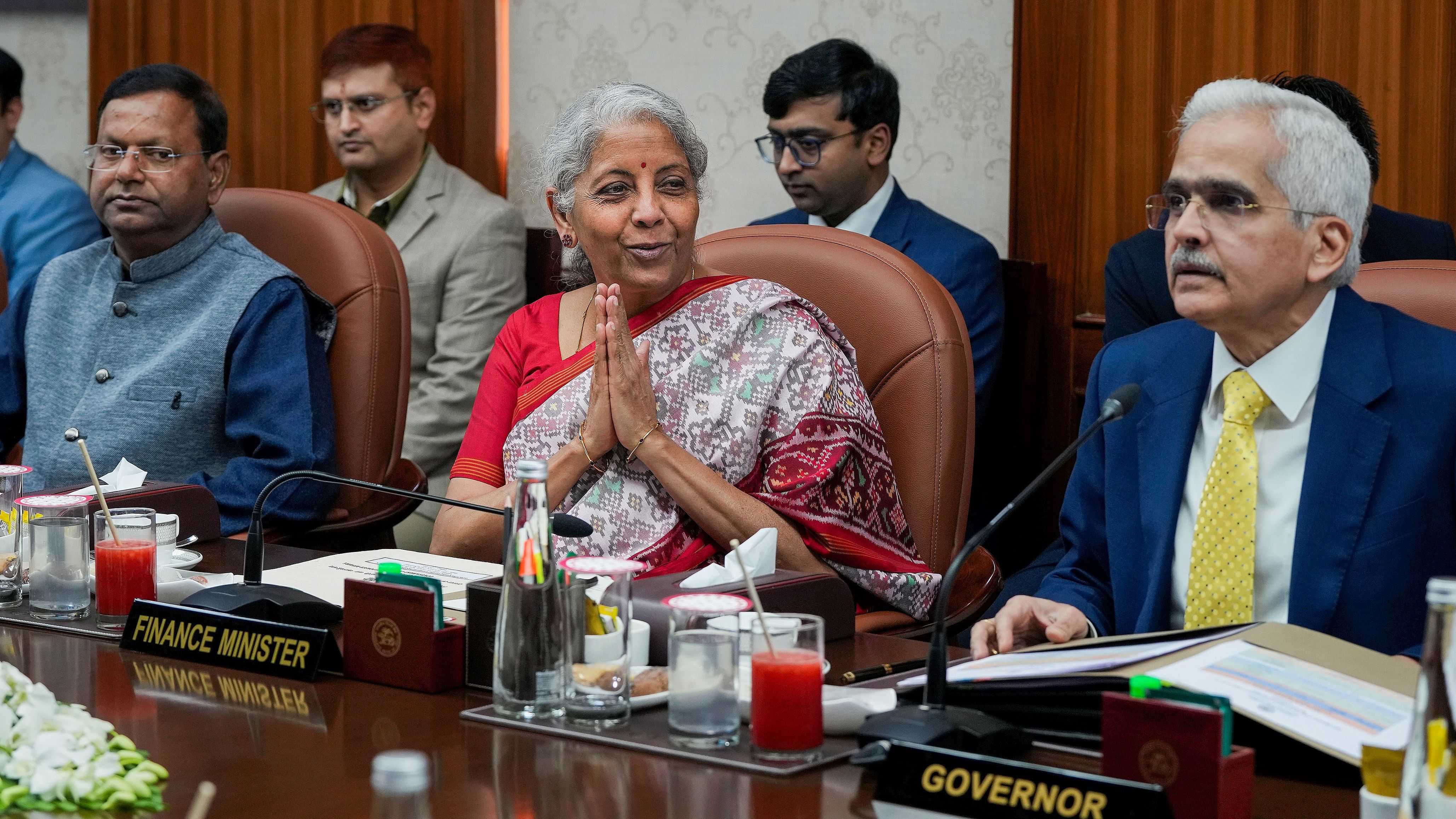
Finance Minister Nirmala Sitharaman presented her sixth Budget on February 1.
Credit: PTI Photo
The Interim Union Budget 2024–25 was presented on February 1, 2024. There were no major populist announcements. However, there is a specific focus on three areas: infrastructure, tourism development, and fiscal consolidation. To give a boost to infrastructure, under Prime Minister Gati Shakti Yojana, three major economic railway corridor programmes are being implemented: (a) Energy, mineral, and cement corridors; (b)Port connectivity corridors; and (c) High-traffic-density corridors.
For realising the vision of ‘Viksit Bharat,’ a provision of Rs 75,000 crore has been earmarked as a 50-year interest-free loan to support those milestone-linked reforms by the state governments.
Another important area that many investors, rating agencies, and economists were keenly anticipating was the fiscal consolidation roadmap of the Union government. The finance minister mentioned in her budget speech that the government will continue on the path of fiscal consolidation, as announced in the 2021–22 budget. The fiscal targets as per the Fiscal Responsibility and Budget Management Act, 2003 (FRBM Act) have been paused for a few years owing to the Covid-19 pandemic and its adverse impact on the macroeconomic environment. With a shortfall in revenues and an increase in expenditure commitments due to the pandemic, fiscal targets as laid down in the FRBM Act have to be exceeded. In the 2021–22 budget, a revised fiscal consolidation road map was announced with the target of reducing the fiscal deficit below 4.5% of GDP by 2025–26.
The fiscal deficit in 2024–25 is estimated to be 5.1% of GDP, adhering to the path laid down during the 2021–22 budget. It is to be noticed that the fiscal deficit, as per the revised estimates for 2023–24, is less than what was budgeted for 2023–24. Even the revenue deficits are revised downward. There is a clear indication of a decline in the fiscal deficit and revenue deficit as a percent of GDP between 2023–24 and 2024–25. Fiscal deficits are the difference between revenue receipts plus non-debt capital receipts and total expenditure. Revenue deficits are the difference between revenue receipts and revenue expenditures. Revenue expenditure consists of current expenses like wages and salaries, interest payments, administrative expenses, subsidies, etc.
The area of concern is that fiscal deficits and revenue deficits are still above the FRBM Act’s target of 3% of GDP and zero percent, respectively. The Golden Rule of Public Finance says that the amount borrowed shall be used for capital formation. In essence, whatever the government borrows, it must use it for productive investments. The concern here is that nearly 40% of fiscal deficits are covered by revenue deficits. This implies that only 60% of the fiscal deficits are left over for capital investments. This situation was even poorer during 2022–23, with revenue deficits accounting for 60% of fiscal deficits. Thankfully, the situation has improved but is not meeting the ‘Golden Rule’ of public finance.
It was highlighted in the ‘Statements of Fiscal Policy’ as required under the FRBM Act, 2003, that the Union government would pursue a broad path of fiscal consolidation to attain a level of fiscal deficit lower than 4.5% of GDP by FY 2025–26 while continuing with its efforts to usher in and sustain broad-based inclusive economic growth for the people.
Let us hope that the Union government will continue to adhere to the laid-down fiscal consolidation road map and preferably meet the target of fiscal deficits below 3 per cent of GDP. In addition, adhering to the Golden Rule of Public Finance should not be forgotten.
(The writer is an assistant professor of economics at the School of Social Sciences, M S Ramaiah University of Applied Sciences, Bengaluru)